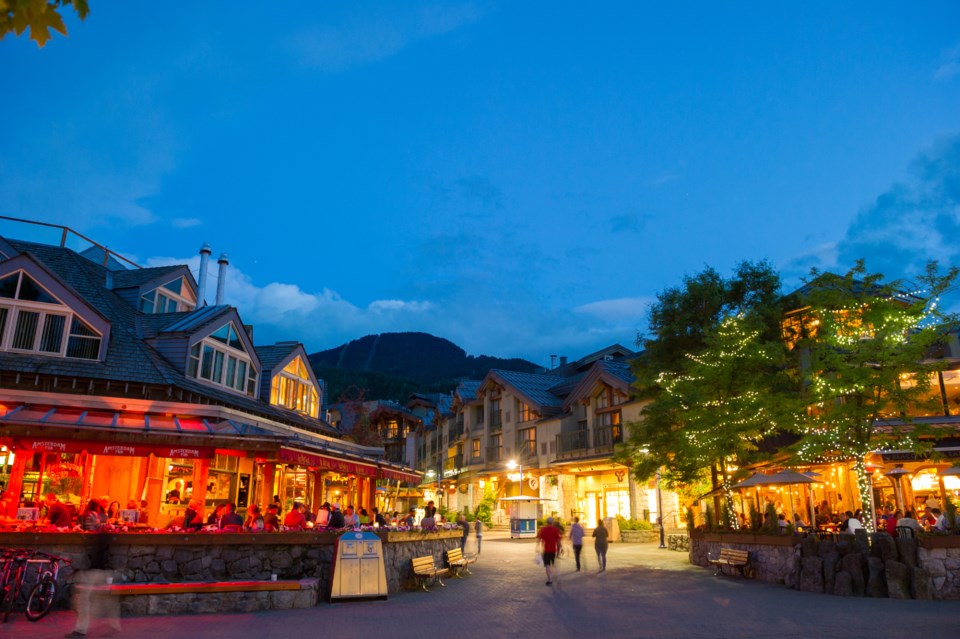Heading into the second consecutive summer free from border closures and lingering pandemic restrictions, many in Whistler’s tourism industry are anticipating a busy few months full of visitors making their warm-weather escape to the mountains. Whistler is a year-round resort, after all.
But in terms of hotel room bookings, preliminary numbers aren’t quite aligning with those predictions.
Whistler’s tourism outlook for the coming months is not as strong as it was ahead of the 2022-23 winter season, explained Tourism Whistler president and CEO Barrett Fisher. The resort is “seeing a softening in our pace for the upcoming summer,” she said.
Based on that data, the resort is not on track to break the visitation records it set in the years leading up to the pandemic. Whistler’s bookings this May are pacing “a little bit slower” than the pre-pandemic 2019, 2018, and 2017 summer seasons, “but even compared to last year, we’re pacing a little softer,” said Fisher. “We are anticipating when all is in and when our marketing programs are complete, that we will likely see similar visitation levels to 2022, maybe slightly higher.”
Despite British Columbia’s tourism industry anticipating “,” as The Globe and Mail reported this week, Whistler isn’t the only locale observing fewer tourists locking in their summer holidays this year. “We’re seeing this across North America,” Fisher said. “We’re hearing from other resort destinations and other city destinations [that are noticing] a softening in bookings.”
However, pacing “can always change,” she cautioned.
The current trend could be due to a combination of several factors, ranging from a tempering economy to rising interest rates and correspondingly higher debt loads, Fisher theorized.
Whistler traditionally sees a stronger long-haul market and more international visitors in the winter, while 91Ô´´s and regional tourists make up a higher proportion of overall visitors in summer. With that in mind, Tourism Whistler is expecting to see continued strength from B.C. and 91Ô´´ markets in the coming months, but is still waiting to see how the international and U.S. markets will perform. Ahead of schools’ summer breaks, Fisher said Tourism Whistler is setting its sights on West Coast states like Washington and California to help bump up those bookings.
“They have an exceptional exchange rate, which really gives them incredibly good value for money,” she said. “So we are putting a greater focus on our West Coast U.S. markets, because we believe there’s an opportunity there. It’s really how we continue to strategically look at where the greatest opportunities are and how we can optimize those.”
But does this “softening” across the board fall in line with the sustainable tourism levels many in the Sea to Sky envisioned after years of record-breaking visitation? Not exactly, said Fisher.
“Tourism Whistler’s goal is really always about looking to find balance, and that balance means it is certainly a sustainable volume of visitation that feeds our businesses and our local jobs on a year-round basis,” she said. “One of the strategies that we’ve really been focusing a lot on has been how we can shift that weekend visitor to really be thinking about Whistler more as a vacation destination, or coming up midweek.”
The resort typically edges closer to capacity on weekends, fuelled by visitors driving up from the Lower Mainland. Through marketing campaigns, Tourism Whistler is working hard to manage visitor volume by enticing visitors to extend their weekend stay, or book a weekday getaway instead.
“What’s good for the community is also good for the visitor … Balancing visitation numbers over the seven days of the week creates a more positive experience for all,” said Fisher.
Tourism Whistler is starting to see those efforts pay off, she added. “We have actually seen a growth in midweek and some slight declines on the weekends, but this is sort of work in progress.”



